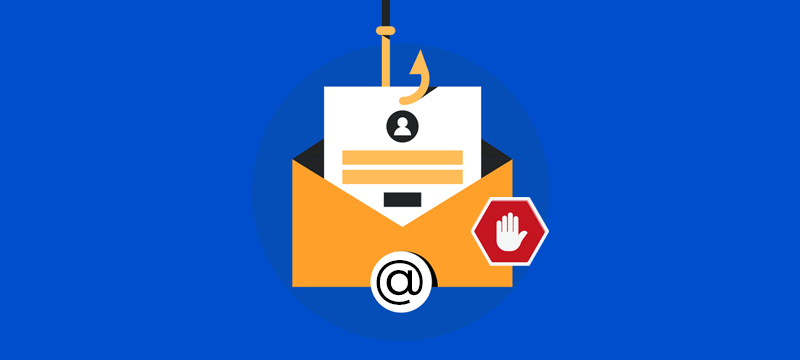Email is the foundation of communication in today’s digitally connected world, offering easy exchanges for both personal and professional needs. Email does, however, come with a number of cybersecurity dangers in addition to its ease. Among these dangers, email-related data breaches have become a major issue as hackers take advantage of loopholes to access private data without authorization.
Such breaches have far-reaching consequences, including compromised personal data, monetary losses, identity theft, and reputational injury. Individuals and organizations must implement a diverse strategy to strengthen their defenses against email-related data breaches in order to effectively address these risks.
Understanding Email-Related Data Breaches
An email-related data breach fundamentally occurs when malicious actors are able to access private information that is included in emails. Numerous methods, including phishing assaults, malware-infected attachments, weak passwords, unsecured networks, and hijacked email servers, can be used to carry out these breaches.
Once a breach is successful, fraudsters have the opportunity to steal login credentials, financial information, personal information, or even spread malware to recipients who aren’t paying attention, which increases the risk of harm.
10 Best Practices to Mitigate Email-Related Data Breaches
- Educate and empower usersUser awareness is the first line of defense against email-related data breaches. Continuous education and training programs that enable users to recognize and respond to email threats should be prioritized by both people and organizations. Regular training on how to spot phishing emails, avoid dubious attachments, and adopt cautious online behaviors can significantly lower the likelihood of becoming a victim of email-related data breaches.
- Employ robust authentication measuresHackers are essentially invited in by weak passwords. It is imperative to promote the usage of secure passwords that contain a combination of letters, numbers, and special characters. Multi-factor authentication (MFA) adds an extra degree of protection by requiring additional verification in addition to a password. Even when passwords are compromised, this acts as a strong deterrent.
- Champion email encryptionEmail encryption is essential for maintaining the privacy of email content. With the use of this technology, messages are kept obscure to unpermitted parties during both transmission and storage. Individuals and firms can efficiently protect sensitive information from potential breaches by utilizing encryption.
- Stay wary of phishing attacksCybercriminals continue to use phishing as a popular and successful method to get around email protection. Users should be taught the value of carefully reviewing sender addresses, verifying email contents, and exercising caution when clicking links or downloading files from unknown or dubious sources in order to mitigate this threat. Anti-phishing software deployment can also proactively screen out suspicious emails.
- Regular software updatesCyber criminals regularly profit from known weaknesses in out-of-date software. It is crucial to maintain the functionality of operating systems, security programs, and email clients. Regular updates frequently include security patches that address vulnerabilities, reducing the likelihood of hacks caused by out-of-date software.
- Implement email filtering mechanismsAdvanced email filtering programs have a significant impact on preventing harmful emails from reaching recipients’ inboxes. These systems provide the ability to detect and quarantine questionable emails, including phishing attempts and malware-filled attachments, automatically. Users are protected from potential risks by strengthening email filtering capabilities.
- Prioritize secure network connectionsOnly secure connections using protocols like HTTPS or virtual private networks (VPNs) should be used to access email accounts. When accessing emails over public Wi-Fi networks, which are more likely to be intercepted by cyber criminals, this practice takes on increased importance.
- Routine data backupsIt is impossible to exaggerate how important data backups are. Regularly backing up important emails and attachments to secure repositories ensures that crucial data will still be retrievable in the event of a compromise. remote backups provide a priceless safety net against catastrophic loss.
- Strengthen email server securityFor their email servers, businesses must employ strict security procedures. Firewalls, intrusion detection systems, and recurring security audits must be implemented as a result. The resilience against unauthorized access is strengthened by strengthening the security architecture of email servers.
- Craft an incident response strategyNo matter how strong your defenses are, having an incident response plan is essential. This strategy should outline the actions to be followed when a data breach involving emails is suspected or verified. Swift action is essential for containing the consequences and includes alerting the affected parties, minimizing the breach, and proactively preventing future recurrences.
Conclusion
Email-related data breaches pose a serious risk in the digital environment. However, by approaching email security in a proactive and comprehensive manner, these dangers may be reduced. Individuals and firms may strengthen their defenses against email-related data breaches by emphasizing user education, integrating strong authentication systems, adopting encryption, and remaining vigilant against emerging risks like phishing assaults.
A thorough email security plan includes regular software upgrades, effective email filtering, secure network connections, careful data backups, and reinforced email servers. An effective incident response strategy is essential because it lessens the impact of possible breaches. It takes teamwork, ongoing education, and persistent adherence to best practices to prevent email-related data breaches, which results in the assurance of the confidentiality of digital communications.
